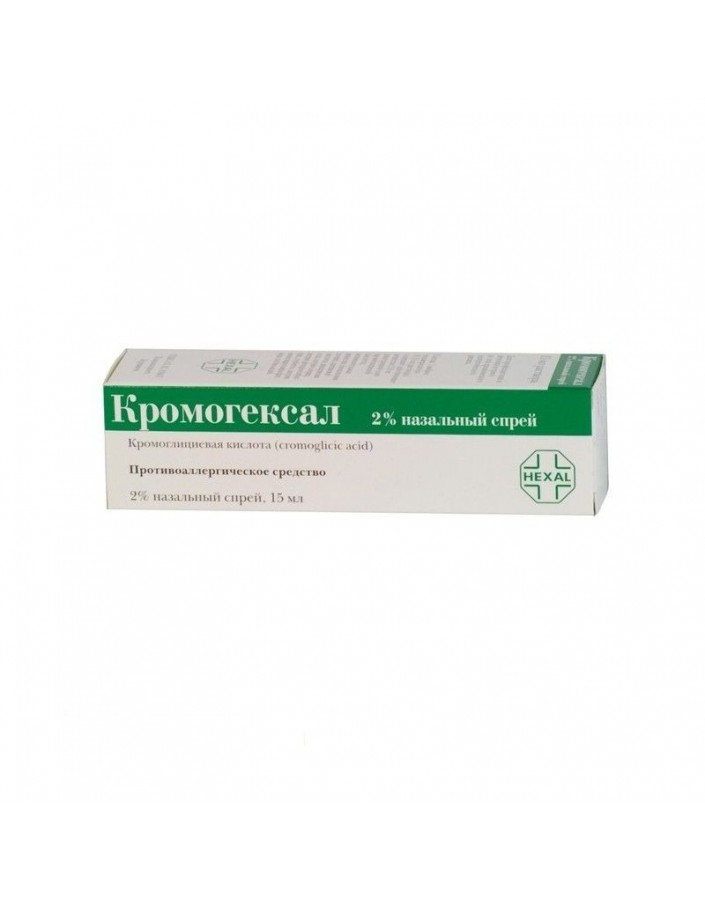



CROMOHEXAL NASAL SPRAY 2% -15ML

Security policy (edit with Customer reassurance module)

Delivery policy (edit with Customer reassurance module)

Return policy (edit with Customer reassurance module)
pharmachologic effect
Antiallergic agent, has a membrane stabilizing effect, blocks the entry of Ca2 + into mast cells, prevents mast cell degranulation and the release of histamine, bradykinin, leukotrienes (etc.), and other biologically active substances, prevents the development of bronchospasm. Most effective for prophylactic use.
When administered intranasally, less than 7% is absorbed into the systemic circulation. Communication with plasma proteins - 65%. Not metabolized, excreted by the kidneys and with the bile in unchanged form (approximately in equal amounts within 24 hours after application). T1 / 2 - 1.5 h. A part of the active substance is swallowed (about 1%) and excreted through the gastrointestinal tract without significant absorption.
Pollinosis, allergic rhinitis (including seasonal or year-round) - prevention and treatment.
Hypersensitivity, pregnancy, lactation, child age (up to 5 years). With care - renal and / or liver failure, nasal polyps.
1 dose in each nostril 4-6 times a day. The course of treatment is 4 weeks. Cancellation should be carried out gradually over 1 week.
On the part of the respiratory system: irritation or burning of the nasal mucosa, frequent sneezing, cough, increased secretion from the nose, rarely - nosebleeds. Anaphylactic reactions : difficulty swallowing, urticaria, itchy skin, swelling of the face, lips or eyelids, wheezing or difficulty breathing, skin rash. Other: unpleasant taste, headache.
In addition to the above side reactions, when prescribing preparations of cromoglicic acid for inhalation use are described (a causal relationship has not been proven): 1 in 10,000 patients have angioedema, bronchospasm, cough, dizziness, dysuria (including frequent urination), headache pain, swelling and pain in the joints, laryngeal edema, lacrimation, nausea, nasal congestion, rash, swelling of the parotid salivary glands, urticaria.Anemia, exfoliative dermatitis, hemoptysis, hoarseness, myalgia, nephropathy, periarteritis, pericarditis, peripheral neuritis, photodermatitis, polymyositis, pulmonary infiltrates with eosinophilia are noted in 1 out of 100,000 patients. There were no reports of similar effects when using forms for intranasal use. Therapy should be continued throughout the duration of the allergen. If the irritation or burning sensation of the nasal mucosa does not go away or the cessation of treatment is intensified.
When adding cromoglyceic acid to receiving antihistamines, the dose of the latter can be reduced or they can be canceled.

CROMOHEXAL NASAL SPRAY 2% -15ML